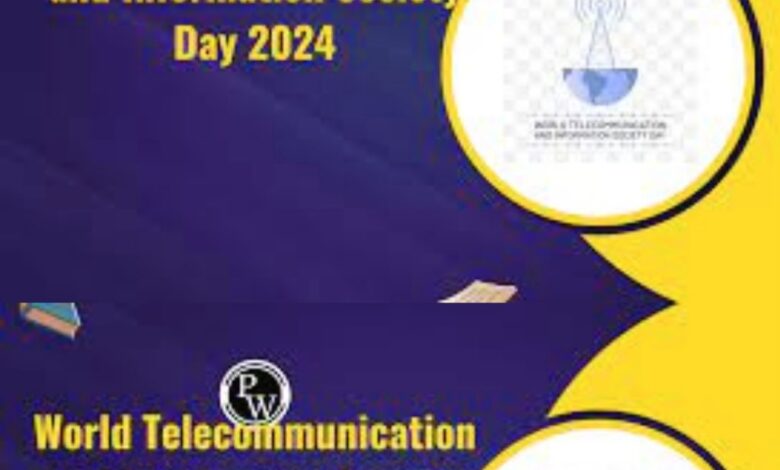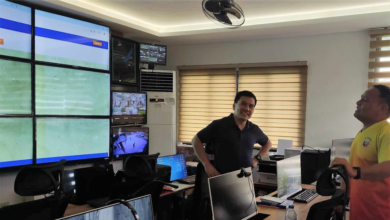World Telecommunication And Information Society Day (WTISD 2024)

Ch. Mudassar Naveed
Theme: Digital Innovation for Sustainable DevelopmentUnlocking Pakistan’s Connectivity: Enablement of Next-Gen Wi-Fi for a Sustainable Tomorrow Every year on World Telecommunication and Information Society Day (WTISD), we celebrate the potential of technology to create a more sustainable and prosperous future for everyone.
WTISD raises awareness of the benefits that the internet and other communication tools (ICTs) bring to societies and economies. This year’s theme, “Digital Innovation for Sustainable Development,” emphasizes how advancements can bridge the digital gap and contribute to a greener world. RLAN (Radio Local Area Network) or WLAN (Wireless LAN), which is dominated by IEEE 802.11 family of standards and branded as Wi-Fitechnology highlights its significance in advancing global connectivity and empowering communities.
The ubiquity of Wi-Fi access for wireless connectivity of devices – mobile phones, tablets, laptops, desktops, TVs, set-top boxes, surveillance cameras, sensors, ACs, etc. – cannot be overstated. Wi-Fi has transformed the way we work, live & interact. It has empowered countless innovations across industries and applications and thus has become as engine of economic growth and societal progress.
The global embracement of one standard for very last “Deca-meter” connectivity has enabled global roaming and interoperability across borders. Globally, more than 21 billion Wi-Fi devices are in use today and over 4 billion new devices shipped in last year. Further, as per study, ~80% of data traffic in carried in Indoor environments and more than 70% of mobile traffic is offloaded to Wi-Fi when moved indoors.Thus Wi-Fi is seen as a complimentary wireless technology to cellular mobile and eases out congestion on networks to make available capacity & enhance experience for users in the outdoor environment.
The current Wi-Fi in Pakistan runs on two bands: 2.4 GHz and 5GHz with available bandwidth of 100MHz and 150Mhz respectively. However, these bands are classified by International Telecommunication Union (ITU) Radio Regulations (RR) as Industrial, Scientific & Medical (ISM) radio bands in which multiple applications can co-exist under Unlicensed Regime. These include everyday technologies like Microwave Oven, Bluetooth, Cordless Phones, Plasma Lamps, Industrial Induction Heating, Backhaul Communication Links, Medical Imaging and so on. All these applications together with Wi-Fi are competing for resources in the scarce frequency spectrum for throughput and user experience and thus are limited by interference. Wi-Fi Alliance introduced the next evolution Wi-Fi 6 in 2019 but was limited in actual performance due to the limited bandwidth and interference in existing 2.4GHz & 5GHz bands. Globally, 6GHz band (5,925- 7,125 MHz – 1,200 MHz) was identified as the new band to support the next generation of Wi-Fi and was branded as Wi-Fi 6E.
Pakistan is taking a leap forward in wireless connectivity with the opening of the 6 GHz spectrum band (5,925 – 6,425 MHz – 500 MHz) for unlicensed use for RLAN. This move will provide ample bandwidth to support the advanced Wi-Fi 6E and newer Wi-Fi 7& beyond generations. It promises cleaner, non-overlapping channels with significant bandwidths. PTA’s intention is to align Pakistan with global wireless innovations and the decisionpaves the way for the deployment of Wi-Fi 6E, the latest Wi-Fi standard promising significantly faster speeds, lower latency, and a more reliable & superlative internet experience for users across the country.
Some of the key features of the new generation of Wi-Fi are: • Larger capacity with more spectrum resources: Wi-Fi 6E& later generations have 500 MHz of spectrum in 6GHz band, providing abundant spectrum resources that are even more than the combined resources of the conventional 2.4 GHz and 5 GHz frequency bands. This significantly increases network capacity and reduces congestion. Wider channels for faster speed: Wi-Fi 6E hasthree contiguous 160 MHz channels in 6GHz band, improving the user experience by at least 3X • Less interference:
6GHz spectrum provides a clean spectrum rangeand is therefore free from interference from otherwireless networks such as microwave ovens, lamps, etc. • Support for enhanced security over air – WPA3 PTA with active support Frequency Allocation Board (FAB) &Ministry of IT & Telecom, under the overall GoP vision of “Digital Pakistan” strives to be pro-active and progressive towards the embracement of new technologies, thus enhancing the user experience and driving positive impact on economy. Pakistan joins a growing list of countries, including the United States, the European Union, KSA, Australia, Japan, South Korea, that have already adopted Wi-Fi 6E. To date, over 60 countries have adopted it, with Pakistan being the 10th country in Asia (excluding the Middle East) to do so.This move positions Pakistan as a regional leader in embracing next-generation RLAN (Wi-Fi) technology. With the rapid developments in computing & graphic processing power, electronics & economies of scale, Wi-Fi 6E shall drive the uptake of diverse use cases building upon low latency, high bandwidth, such as: • Multi User Immersive Reality Metaverse – Augmented Reality / Virtual Reality / Extended Reality (AR/VR/XR) • Remote Learning & Immersive 3D Training • HD Video Streaming (8K & beyond) Gaming – Online & Real-Time • Trading – Online & Real-Time • Home Server, Screen Mirroring & Office Intranet (Cloud) • Industry IOT enabled Automation • Rich Media Applications •
Cellular Offloading The wider bandwidth and reduced interference offered by Wi-Fi 6E will be a boon for businesses and individuals alike, serving as a catalyst for innovation in sectors such as Healthcare, Education, Agriculture,Manufacturing,Finance, Hospitality, Entertainment, and Smart Cities.The new Wi-Fi generations have the potential to bridge the digital divide in Pakistan, empowering individuals and communities with greater access to information and opportunities. By leveraging Wi-Fi 6E and beyond, countries like Pakistan can enhance their digital infrastructure and provide better internet access to underserved& unserved areas by connecting the very last mile i.e. last deca-meter access, promoting digital inclusion and socioeconomic development. The decision to open the 6 GHz spectrum demonstrates PTA, FAB &MoIT&T commitment to foster innovation and ensuring Pakistanis have access to emerging technologies. This aligns with the goals of World Telecommunication and Information Society Day (WTISD 2024), which focuses on ‘Digital Innovation for Sustainable Development.”Wider adoption of Wi-Fi 6E& beyond technology, particularly in conjunction with improved infrastructure and affordability initiatives, could contribute to closing digital divide by offering faster and more reliable internet access in underserved areas.The PTA is committed to working with industry stakeholders to facilitate the deployment of Wi-Fi 6E networks nationwide. This collaboration will be crucial in accelerating Pakistan’s digital transformation journey and achieving the Digital Pakistan Vision.



